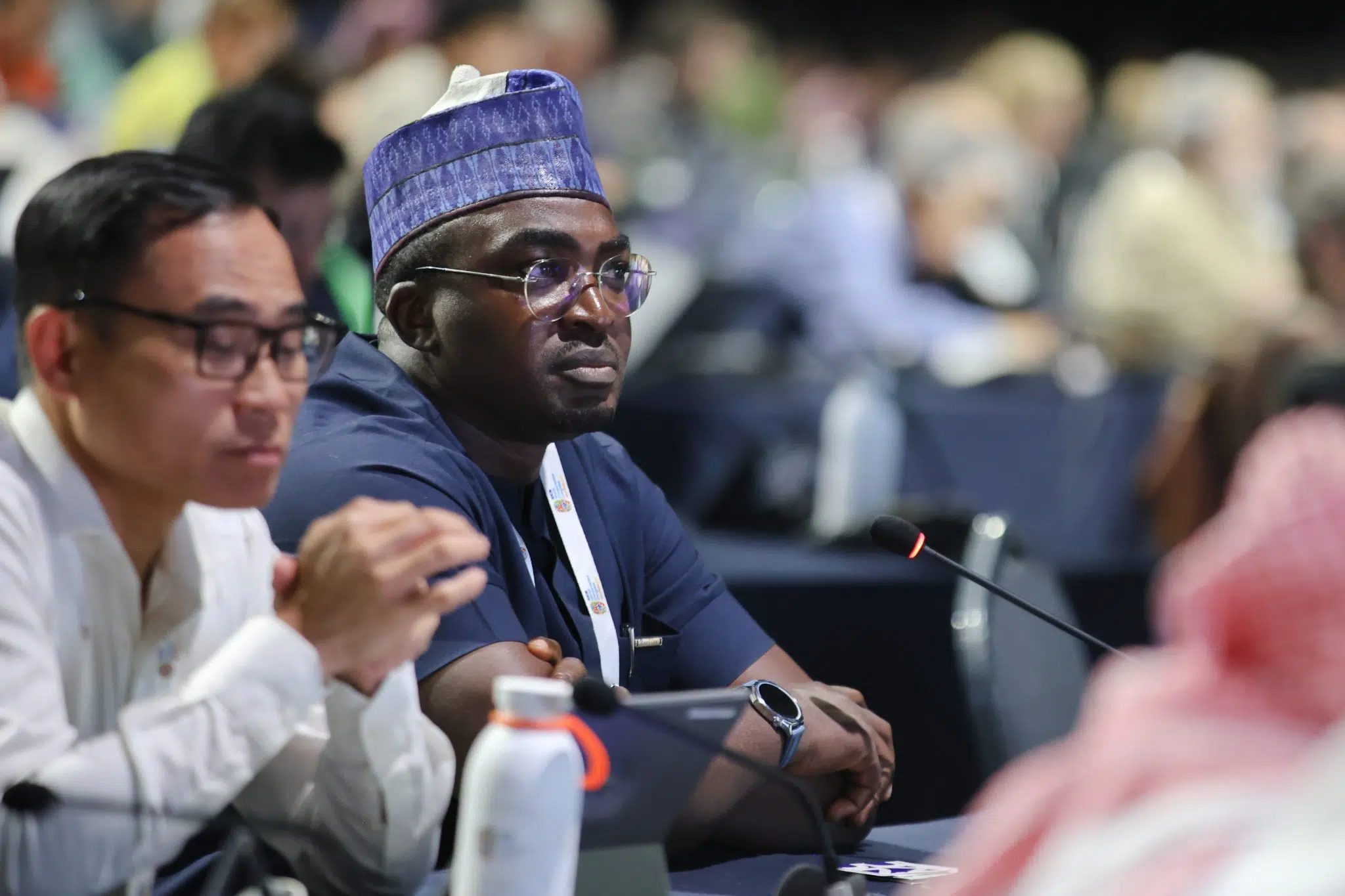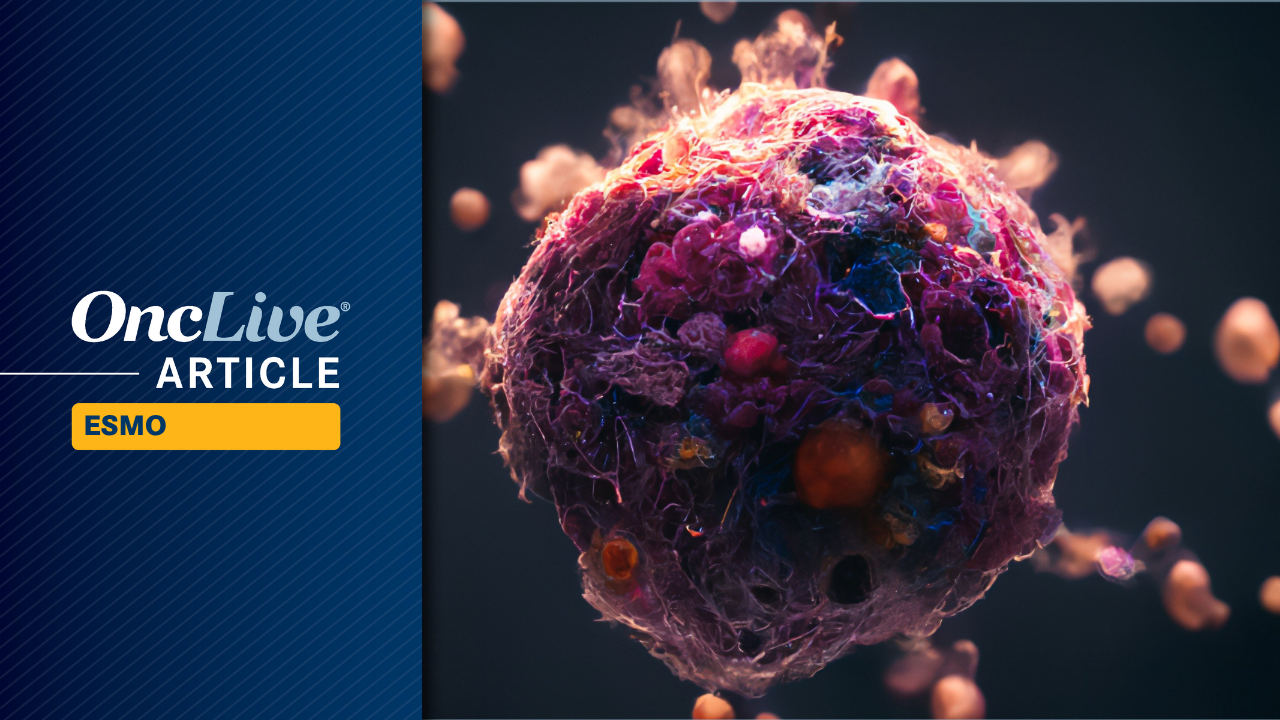This request seems a bit unusual, so we need to confirm that you’re human. Please press and hold the button until it turns completely green. Thank you for your cooperation!
Blog
-
Just a moment…
Just a moment… -

IUCN World Conservation Congress: Demonstrating the power of many
The business-end of the Congress
One of the most important outcomes of the Congress is the discussion and agreement of motions, which, if passed, become resolutions or recommendations and guide the work and advocacy of the Union over the…
Continue Reading
-

Pin1 inhibitors could reduce or stop outbreaks of herpes simplex virus 1
A class of antivirals called Pin1 inhibitors could reduce or stop outbreaks of herpes simplex virus 1 (HSV-1), the common infection behind oral herpes, according to new research published in Antiviral Research on July 25.
HSV-1…
Continue Reading
-

SteelSeries wireless gaming earbuds are down to $128 for the first time
When I have to decide which wireless gaming earbuds that I want to use, it’s a tough choice between the SteelSeries Arctis Buds and the Sony InZone Buds. Both have a comfortable fit, active noise cancellation, great sound quality, and their…
Continue Reading
-

Scientists transmit electricity wirelessly over five miles using a laser
Lasers are not only for cutting metal or scanning groceries. They can also carry usable electricity across open air without a single wire.
A U.S. team sent electrical power as laser light across about 5.3 miles and turned it back into electricity…
Continue Reading
-

You can try Google’s viral image editing tool right in Search now – here’s how
Javier Zayas Photography/Moment via Getty Follow ZDNET: Add us as a preferred source on Google.
ZDNET’s key takeaways
- Google unveiled Nano Banana in Google Search and Notebook LM.
- It will release the AI image editor in Photos soon.
- The tool…
Continue Reading
-

Adjuvant Nivolumab Generates Long-Term DFS Benefit in Resected MIUC
Treatment with adjuvant nivolumab (Opdivo) led to a sustained disease-free survival (DFS) advantage compared with placebo in patients with muscle-invasive urothelial carcinoma (MIUC) following radical radical resection, according to 5-year follow-up findings from the phase 3 CheckMate 274 trial (NCT02632409) presented at the
2025 ESMO Congress and published concurrently in Annals of Oncology.Among all randomly assigned patients, the median DFS was 21.9 months (95% CI, 18.8-36.9) with nivolumab vs 11.0 months (95% CI, 8.3-16.6) with placebo (HR, 0.74; 95% CI, 0.61-0.90). In each respective arm, the DFS rates were 45.1% vs 35.3% at 36 months, 41.2% vs 33.0% at 48 months, and 36.4% vs 30.9% at 60 months. In patients with a PD-L1 expression of 1% or higher, the median DFS was 55.5 months (95% CI, 25.8-66.5) in the nivolumab arm and 8.4 months (95% CI, 5.6-20.0) in the placebo arm (HR, 0.58; 95% CI, 0.42-0.79). The DFS rates in the PD-L1 expression of 1% or higher population were 56.6% vs 33.1% at 36 months, 53.9% vs 32.2% at 48 months, and 46.8% vs 32.2% at 60 months in the experimental and placebo arms, respectively.
Among all randomly assigned patients with muscle-invasive bladder cancer (MIBC), the median DFS was 25.6 months (95% CI, 19.2-42.6) with nivolumab and 9.4 months (95% CI, 7.4-13.7) with placebo (HR, 0.66; 95% CI, 0.53-0.81). The 36-month, 48-month, and 60-month DFS rates were 46.8% vs 32.3%, 42.8% vs 30.2%, and 36.7% vs 28.9%, respectively. Among patients with MIBC and a PD-L1 expression of at least 1%, the median DFS in each arm was 59.4 months (95% CI, 39.5-not evaluable [NE]) and 8.3 months (95% CI, 4.7-16.6); the DFS rates were 60.3% vs 30.7% at 36 months, 57.0% vs 30.7% at 48 months, and 48.3% vs 30.7% at 60 months (HR, 0.50; 95% CI, 0.36-0.72).
In patients with MIBC and prior receipt of cisplatin, the median DFS was 19.6 months (95% CI, 15.6-48.2) with nivolumab compared with 8.3 months (95% CI, 5.6-11.2) using placebo (HR, 0.63; 95% CI, 0.47-0.84). The DFS rates in each arm were 46.8% vs 29.3% at 36 months, 42.6% vs 27.8% at 48 months, and 33.4% vs 26.2% at 60 months. Among those without prior receipt of cisplatin for MIBC, data showed a median DFS of 25.9 months (95% CI, 19.2-55.5) vs 13.7 months (95% CI, 8.2-22.1) in each respective arm (HR, 0.70; 95% CI, 0.52-0.95). The DFS rates in each arm across this population were 46.6% vs 35.6% at 36 months, 42.8% vs 32.9% at 48 months, and 39.8% vs 31.9% at 60 months.
“With 5 years [of] follow-up, adjuvant nivolumab continues to show DFS benefits vs placebo in all [randomly assigned] patients and in patients with tumors PD-L1 [expression] greater than or equal to 1%. The benefits of nivolumab extended to the secondary and exploratory end points,” presenting investigator Matthew Galsky, MD, professor of Medicine (Hematology and Medical Oncology), director of Genitourinary Medical Oncology, co-director of the Center of Excellence for Bladder Cancer, and associate director for Translational Research at The Tisch Cancer Institute, stated in the presentation. “Overall, these results provide additional support for adjuvant nivolumab as a standard treatment for patients with high-risk MIUC after radical surgery.”
In the double-blind, multicenter phase 3 CheckMate 274 trial, 709 patients with high-risk MIUC were randomly assigned 1:1 to receive nivolumab at 240 mg intravenously every 2 weeks (n = 353) or matched placebo (n = 356). Investigators stratified patients by tumor PD-L1 expression status, receipt of prior neoadjuvant cisplatin-containing chemotherapy, and nodal status.
The trial’s primary end point was DFS in all randomly assigned patients and among those with a PD-L1 expression status of at least 1%. Secondary end points included overall survival (OS) and disease-specific survival (DSS). Safety was an exploratory end point.
Interim OS data showed that among all randomly assigned patients, the median OS was 75.0 months (95% CI, 56.7-NE) with nivolumab and 50.1 months (95% CI, 38.0-72.1) with placebo (HR, 0.83; 95% CI, 0.67-1.02). The 36-month, 48-month, and 60-month OS rates in each arm were 65.3% vs 57.7%, 59.5% vs 51.3%, and 54.6% vs 47.1%, respectively. Among those with PD-L1 expression of 1% or higher, the median OS was not reached (NR; 95% CI, 70.0-NE) vs 59.4 months (95% CI, 29.1-NE), with respective rates of 73.8% vs 56.5% at 36 months, 69.6% vs 51.6% at 48 months, and 64.3% vs 49.9% at 60 months (HR, 0.63; 95% CI, 0.44-0.90).
Among all randomly assigned patients with MIBC, interim data showed a median OS of 61.2 months (95% CI, 48.2-NE) with nivolumab and 38.2 months (95% CI, 29.8-50.3) with placebo (HR, 0.73; 95% CI, 0.58-0.91). The OS rates in this population were 63.8% vs 53.1% at 36 months, 56.6% vs 45.9% at 48 months, and 51.3% vs 41.8% at 60 months. Among those with MIBC and PD-L1 expression in at least 1% of tumor cells, the median OS was NR (95% CI, 75.0-NE) vs 38.2 months (95% CI, 27.8-72.1) in the nivolumab and placebo arms, respectively (HR, 0.51; 95% CI, 0.35-0.76). The OS rates were 75.0% vs 53.3% at 36 months, 70.0% vs 47.4% at 48 months, and 64.8% vs 45.3% at 60 months.
In the overall population, the median DSS was NR (95% CI, 91.9-NE) with nivolumab and NR (95% CI, 52.1-NE) with placebo (HR, 0.79; 95% CI, 0.62-1.00). Data showed DSS rates of 71.7% vs 63.1% at 36 months, 66.7% vs 57.5% 48 months, and 63.0% vs 54.1% at 60 months. In patients with PD-L1 expression of 1% or higher, the median DSS in each arm was NR (95% CI, NE-NE) vs 92.1 months (95% CI, 54.4-NE); the DSS rates in each arm were 79.8% vs 64.3% at 36 months, 77.0% vs 59.6% at 48 months, and 74.0% vs 57.6% at 60 months (HR, 0.57; 95% CI, 0.37-0.87).
Among 709 randomly assigned patients, 133 (18.8%) underwent circulating tumor DNA (ctDNA) analysis; of these patients, 54 (40.6%) had evaluable ctDNA. The median DFS was 52.1 months (95% CI, 19.4-NE) in patients with undetectable ctDNA (n = 79) vs 5.0 months (95% CI, 2.8-6.5) among those with detectable ctDNA (n = 54; HR, 0.30; 95% CI, 0.18-0.48). Additionally, the median OS was NR (95% CI, 62.0-NE) and 28.2 months (95% CI, 19.4-36.1) among patients with undetectable and detectable ctDNA, respectively (HR, 0.44; 95% CI, 0.25-0.76).
Among patients with detectable ctDNA, nivolumab conferred improvements in DFS (HR, 0.35; 95% CI, 0.18-0.66) and OS compared with placebo (HR, 0.41; 95% CI, 0.20-0.83). In those with undetectable ctDNA, numerical improvements occurred with nivolumab for DFS (HR, 0.99; 95% CI, 0.51-1.93) and OS (HR, 0.87; 95% CI, 0.41-1.84). Galsky noted that conclusions in exploratory post hoc ctDNA analyses were limited due to a small sample size.
Investigators observed no new safety signals in the latest analysis for CheckMate 274. Any-grade treatment-related adverse effects (TRAEs) occurred in 79% and 56% of the nivolumab and placebo arms, respectively; grade 3 or higher toxicities affected 18% vs 7%. The most common any-grade TRAEs in each arm included pruritus (23% vs 11%), fatigue (17% vs 12%), diarrhea (17% vs 11%), rash (15% vs 6%), and lipase increases (10% vs 6%).
Disclosures: Galsky noted advisory board/consul associations with AbbVie, Alligator Bioscience, Analog Devices, ARS Pharmaceuticals, Asieris Pharmaceuticals, AstraZeneca, Basilea Pharmaceutica, Bicycle Therapeutics, Bristol Myers Squibb, Curis, Daiichi Sankyo, Dragonfly Therapeutics, EMD Serono, Fujifilm, Genentech, Gilead Sciences, GlaxoSmithKline, Janssen, Merck, Numab Therapeutics, Pfizer, Rappta Therapeutics, Seagen, UroGen Pharma, and Veracyte.
Reference
Galsky MD, Gschwend JE, Milowsky MI, et al. Adjuvant nivolumab versus placebo for high-risk muscle-invasive urothelial carcinoma: 5-year efficacy and ctDNA results from CheckMate 274. Ann Oncol. Published online October 17, 2025. doi:10.1016/j.annonc.2025.09.139
Continue Reading
-
Just a moment…
Just a moment… This request seems a bit unusual, so we need to confirm that you’re human. Please press and hold the button until it turns completely green. Thank you for your cooperation!
Continue Reading
-

CHEST to Offer Compelling Panels on Lung, Heart Health at Upcoming Conference
The windy city of Chicago, Illinois, is set to host the
CHEST: American College of Chest Physicians Annual Meeting from October 19 to October 22, 2025, highlighting innovative research and discussions surrounding pulmonary and critical care specialties. The conference will feature multiple sessions concerning the use of artificial intelligence (AI) in medicine, the use of glucagon-like peptide 1 inhibitors to address issues in sleep medicine, and late-breaking abstracts in its 4-day schedule.The main conference events kick off on October 19, with the keynote address coming from inspirational speaker Sean Swarner, who has 1 functioning lung after 2 bouts with cancer. The power of pulmonary medicine, allowing those with lower lung function to lead normal lives, highlights the reason that many of the doctors practice: to improve the prognosis for those with major pulmonary challenges. After this demonstration of what progress in pulmonary medicine can do for the average person, the core of the conference will get underway.
New coverage guidelines will be debated on Monday morning, specifically on noninvasive ventilation in chronic obstructive pulmonary disease (COPD). The panel aims to review the National Coverage Determination guidelines, identify challenges that will arise due to the guidelines, and discuss how to implement the guidelines into practice.
AI is a topic of conversation at multiple panels, including at the opening session on Tuesday, October 21, where the use of AI will be discussed in both pulmonary and critical care medicine. Experts on the panel plan to highlight 3 AI applications that are affecting medicine in the pulmonary, critical care, and sleep specialties and teach the audience how to use these AI tools to help documentation and clinical decisions. Ethical challenges and implementation pitfalls of AI will also be covered as the practical use of AI is questioned.
Also on Tuesday, the conference will focus on the past, present, and future of respiratory vaccines. COVID-19 vaccines, influenza, and pneumococcal disease vaccines have previously been shown to be helpful in avoiding unnecessary death due to these viruses, and the future development of vaccines in this space could further reduce morbidity in vulnerable populations. The goal of the panel, according to the description, is to “encourage[e] pulmonary and critical care clinicians to continue their work as advocates of vaccination” by going over current science and recommendations for respiratory vaccines.
The conference’s Wednesday events kick off with a panel about the new federal policies in the US that have changed the priorities affecting multiple areas of health. The National Medical Association will be offering insight into what these changes mean for medical education and research across the country, including highlighting both legislation and executive orders that affect health care and discussing methods of reducing the harm that could come from these actions. Aaron Baugh, MD, and Marilyn Foreman, MD, MS, of UCSF Department of Medicine and Indiana University School of Medicine, respectively, will be the moderators for this panel.
The conference is set to conclude on October 22. After 4 full days of panels, discussions, and abstract presentations, CHEST will draw to a close on Wednesday evening, after providing pulmonologists and other specialists across the country with updated research, information, and guidelines to better serve their patients when they return to their practices.
Continue Reading
-
Just a moment…
Just a moment… This request seems a bit unusual, so we need to confirm that you’re human. Please press and hold the button until it turns completely green. Thank you for your cooperation!
Continue Reading